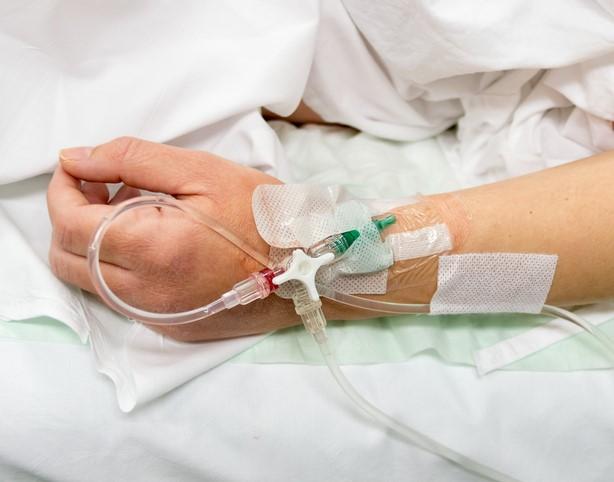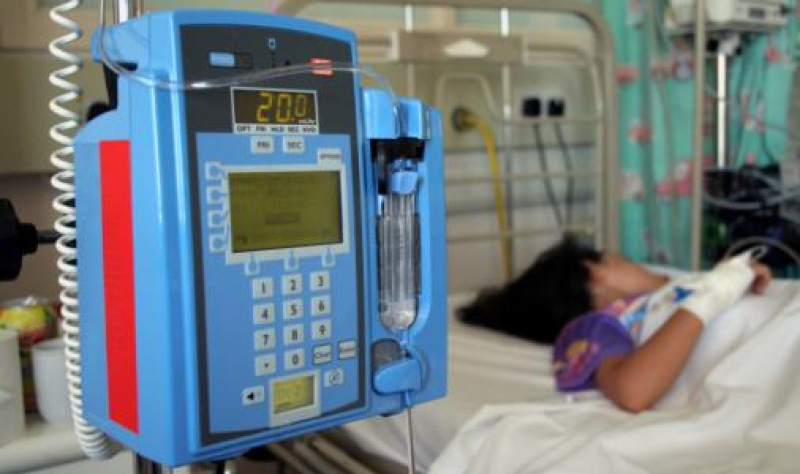COVID in California: Infections in state jump more than 63% in 1 month
COVID in California: Infections in state jump more than 63% in 1 month San Francisco Chronicle


Lower sperm count seen in men who have had COVID than in those never infected
Men who had been infected with COVID-19 experienced a 53% lower sperm count three or more months after testing positive for the coronavirus compared to men who had not been infected, according to a study published in the Medical Journal of Virology. Researchers in Turkey compared the sperm samples from a study group of 100 men ages 20-50 who had tested positive for COVID and had no pre-existing fertility issues, with samples taken from 100 men who met the same criteria but had never tested coronavirus-positive. Samples were taken only from infected men who had had mild or moderate cases. The researchers found that the concentration of sperm was 53% lower in the previously positive group. “It was observed that men with COVID-19 had decreased sperm concentrations suggesting that COVID-19 may have a negative effect on male fertility. However, in the long term, more comprehensive studies with a large sample size are needed to understand better the changes in sperm concentration,” the study stated.
Dramatic jump in California cases in 1 month is stressing hospitals
California is now averaging 10.6 new daily COVID-19 cases per 100,000 residents — marking a 63% increase in one month, according to the latest health department data. The state’s test-positive rate also continues to push up, reaching 7.6%, up from 4.2%, over the same period. The pace of growth is similar to what the state saw ahead of previous waves, including the summer BA.5 spike. Hospitalizations increased to 2,676 patients in California with confirmed COVID-19, a 69% increase from the previous month and the state’s highest daily total since early September. The number of intensive care unit beds available fell below 2,000 for the first time since February.
Flying is for sure back: U.S. screens most air passengers since 2019
More than 2.56 million passengers traveled through the nation’s airports on Sunday, according to data published by the U.S. Transportation Security Administration. That makes it the busiest day since the start of the COVID-19 pandemic and the highest number of passengers since December 2019, even though it was slightly below the 2.88 million screened on the same day that year. The number of overall air passengers was about 5.5% lower compared to Thanksgiving weekend in 2019.
New normal in California is remote work, at least for educated, high-income earners
Working from home for some portion of the week, a nationwide practice during the days of lockdowns and the pandemic months that followed, has become the new normal for a large segment of Californians, new data from the U.S. Census Bureau shows. The data shows high-income employees with college degrees are more likely to have access to this hybrid work model, while lower-income employees work onsite. That means low-wage workers will continue shouldering greater risk of infection and serious coronavirus illness. Multiple studies have found that COVID took its greatest toll in low-income neighborhoods, whose workers were deemed essential during early pandemic lockdowns — the farmworkers, grocery clerks, warehouse packers, and other service employees who continued to report to work in person. Read more about how researchers say remote work will ripple across the broader economy in ways big and small.
Analysis shows most COVID deaths now occur in vaccinated people
For the first time, a majority of COVID fatalities in the U.S. are among vaccinated people — meaning they have received at least the primary series of the vaccine, according to an analysis conducted by Cynthia Cox, vice president at the Kaiser Family Foundation, for the Washington Post. Fifty-eight percent of coronavirus deaths in August were people who were vaccinated or boosted, a breakthrough rate that contrasts to earlier in the pandemic, the analysis showed. As vaccination rates have increased and new variants appeared, the share of deaths of people who were vaccinated has been steadily rising. In September 2021, vaccinated people made up just 23% of coronavirus fatalities. In January and February this year, it was up to 42%, the Post reported. “We can no longer say this is a pandemic of the unvaccinated,” said Cox. Being unvaccinated is still a major risk factor for dying from COVID-19. But efficacy wanes over time, and an analysis out last week from the Centers for Disease Control and Prevention highlights the need to get regular booster shots to keep one’s risk of death from the coronavirus low, especially for the elderly.
The pace of bivalent booster uptake slows dramatically
Less than three months after the updated bivalent boosters against COVID-19 became available, the seven-day average of Americans getting the shots has fallen to 223,730 per day after peaking at 605,655 per day last month, according to data from the CDC. About 12% of all those eligible and 31% of those over 65 nationwide have gotten the new doses, which are formulated to target the original virus and the omicron variant offshoots. “It’s incredibly important as we head into the holidays for people to update their immunity, get the new COVID vaccine, get the flu shot,” White House COVID Response Coordinator Dr. Ashish Jha told ABC’s “This Week” on Sunday. He underscored that the vaccines “are incredibly effective,” and “very safe.”
Californians still shy away from updated booster shot that targets new and old strains
Health officials at all levels of government have been doubling down on urging people to update their coronavirus vaccinations amid continued evidence of poor uptake of boosters in particular. About 72% of Californians have completed their primary vaccination series, with just 16% of those eligible receiving the updated bivalent booster that targets the newer omicron strains of the virus, according to the state dashboard. That marks a 3% change from the previous week. Scientists say boosters are need to strengthen protection as primary vaccination wears off and as new more-vaccine resistent strains emerge. San Francisco’s average test-positive rate increased to 6.9%, after hitting 4.5% last month.
FTC cracks down on Berkeley company, alleging deceptive drug claims
The Federal Trade Commission is suing Precision Patient Outcomes, Inc., of Berkeley and its CEO Margrett Priest Lewis, alleging that it deceptively marketed an over-the-counter dietary supplement as an effective treatment against COVID-19. The agency said the tablets contain nothing more than vitamins, zinc, and a flavonoid. “The FTC will halt baseless claims about COVID-19 treatments that harm consumers’ pocketbooks and health,” said Samuel Levine, director of the Commission’s Bureau of Consumer Protection, in a statement. “We don’t simply seek to stop this kind of fraud, but to permanently prohibit companies and company owners engaging in misconduct from endangering the health and well-being of American consumers.” The FTC alleges that these practices violate the FTC Act and the COVID-19 Consumer Protection Act, which allow the Commission to seek civil penalties in cases of COVID-related consumer fraud. The suit says that Lewis is actively involved in promoting COVID Resist and VIRUS Resist using the company’s website, and social media channels such as Facebook, Instagram, and TikTok.
Golf’s Rory McIlroy says he infected Tiger Woods ahead of the Open
Rory McIlroy, a professional golfer from Northern Ireland, said in an interview with the Sunday Independent that he infected Tiger Woods with COVID-19 ahead of the 150th Open tournament at St. Andrews in July. McIlroy said he experienced symptoms before meeting with Woods: “I woke up that morning feeling a bit achy but didn’t really think anything of it.” McIlroy said he eventually felt ill enough to retreat to his hotel room. He later heard from Woods. “He texted me at 10 o’clock that night. Chills, fever, and I’m like, ‘F-ing hell, I’ve just given Tiger COVID! This is horrendous!’ So we both had COVID going into the Open.” Woods’ potential final appearance at the prestigious tournament ended after two rounds. McIlroy made it into the final round but finished third.
COVID deaths among older adults account for highest percentage ever
Older Americans have been hit hardest throughout the coronavirus pandemic — including by scores of early nursing home deaths — but now nearly 9 in 10 COVID deaths are in people 65 or older — the highest rate ever, according to a Washington Post analysis of CDC data. Some epidemiologists and demographers predict the trend of older, sicker and poorer people dying at disproportionate rates will continue, mirroring the way some other infectious diseases, such as malaria and polio, rage in the developing world while they are largely ignored elsewhere. Officials have justified the easing of lockdowns and restrictions by noting we now have more tools — vaccinations, boosters and treatments to protect against COVID and prevent serious illness and deaths. Noting those, CDC Director Rochelle Walensky nonetheless acknowledged that deaths among the elderly, especially those with multiple chronic conditions, is “a real challenge.”
Unprecedented protests against China’s strict anti-virus measures spread
Rallies against China’s strict “zero COVID-19” policy ramped up on Monday after demonstrators issued an unprecedented call for President Xi Jinping to resign, the Associated Press reports. The protests spread to several cities over the weekend, including Hong Kong where students chanted “oppose dictatorship” in the biggest show of opposition to the ruling Communist Party in decades. Analysts expect the government, which is not backing down on its anti-COVID measures, to quickly silence the dissent. Alex Stamos, director at the Stanford Internet Observatory, said the Chinese government has flooded Twitter with bots to obscure the news of the protests, indicating the “first major failure” to stop government interference under Twitter’s ownership by Elon Musk, according to the Guardian. “Zero COVID,” which aims to isolate every infected person, has kept some residents confined at home for up to four months and they say they lack reliable access to food and medical supplies.
Here’s what you need to know about whether you can get infected with COVID after you’ve had it
Given how many Americans have now had COVID one or more times, a critical question on peoples’ minds during the holiday season of travel and socializing is how much risk they face of getting reinfected. Reinfection depends on factors like which variants are circulating, when you were last vaccinated, and how long it’s been since you contracted COVID. Experts talk to The Chronicle about what else is known regarding reinfection by the coronavirus once you’ve had it.
Yet another new coronarivus variant is on CDC’s radar
The U.S. Centers for Disease Control and Prevention has started tracking the omicron XBB coronavirus subvariant, which last week made up about 3.1% of new COVID-19 infections nationwide according to data published Friday. The new variant of concern joins the now dominant BQ.1, which accounted for 27.9% of cases, and BQ.1.1, which made up 29.4%. Together, they drove nearly 6 in 10 new infections. The previously dominant BA.5 was down to just under a fifth of all cases and BF.7 held at about 7% followed by a “variant soup” that includes BA.4.6, BN.1, BA.5.2.6, BA.4.6, BA.2.75, BA.2.75.2, BA.4, BA.1.1.529 and several other strains that are circulating.
The XBB subvariant was first detected in August in India and has since been sequenced in more than 17 countries, including Bangladesh, Japan and Singapore, where it caused cases to spike at an alarming rate. Singapore’s health ministry said that “there is no evidence that XBB causes more severe illness.” But like BQ.1, there are indications that XBB is resistant to the monoclonal antibody treatments Evusheld and bebtelovimab, according to a pre-print study from researchers in China. The CDC has also shared preliminary estimates that suggest XBB doubles in proportion every 12 days; a much more rapid rate than previous omicron offshoots.
Americans can now anonymously report test results
Last week, the National Institutes of Health launched a new site — makemytestcount.org — that allows Americans to anonymously report the results of their at-home coronavirus tests. The new service comes as publicly reported lab test results hit a pandemic low, with just 2.3 million total tests reported to the CDC. Public health officials have long acknowledged that a majority of people who take rapid at-home COVID-19 tests do not report the results, skewing the true scale of the pandemic. But some have expressed concern that the new service is open for manipulation, making the data useless.
Yep, we are still in a pandemic, Fauci confirms
Dr. Anthony Fauci, about to step down from his official role as the nation’s top infectious disease expert, said the U.S. is “certainly” still in the middle of a COVID-19 pandemic. Fauci confirmed that fact as many people continue to slack off on personal caution even as the winter season increases the risk of virus infection. Between 300 and 400 people are still dying from COVID in the U.S. every day, and the uptake of the latest vaccine booster has been less than 15%, he said Sunday. “I think the idea that forget it, this is over — it isn’t,” he said Sunday on NBC’s “Meet the Press.” White House COVID-19 Response Coordinator Dr. Ashish Jha also said Sunday that it is still “incredibly important” to get vaccinated ahead of the holiday season. “We understand that people want to move on,” Jha told ABC News’ “This Week,” “The good news is, they can move on if they keep their immunity up.” Fauci, wrapping up decades of public service under seven U.S. presidents, also said he is “very troubled” by the divisive state of American politics. “As a public health official, I don’t want to see anyone suffer and die from COVID,” he said. “I don’t care if you’re a far-right Republican or a far-left Democrat, everybody deserves to have the safety of good public health and that’s not happening.”



